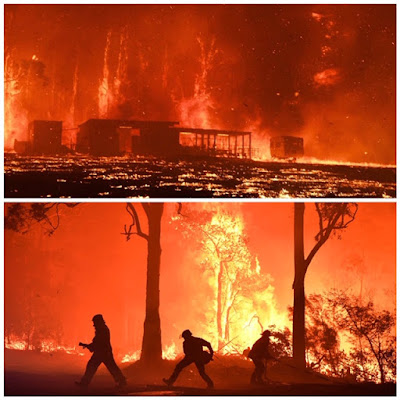The long spell of warm dry weather continues.
We had a couple of days of sporadic showers which put around 20mm into the ground and was just enough to give the vines a little boost but not enough to cause any berry splitting.
Based on long range weather forecasts, we had instigated a curative spray program rather than a preventative one this season. The latest rain event caused the tell tale signs of downy mildew ie. oil spots, to appear on the surface of some of the untreated leaves.
To combat this as well as any potential powdery mildew, we sprayed with the usual protective copper/sulphur (2g/L each) combination and included a downy curative Agri-fos 600 component (3mL/L).
Within a few days the latter had done its work with small brown spots appearing on the leaves where the downy fungus used to be.
Agri-fos is phosphorous acid and has a systemic action ie. the chemical is absorbed by the leaves and translocated to all parts of the vine through its phloem/xylem system.
And the blue colored residue of the copper spray indicates the good leaf coverage that was achieved with the latest application.
Spraying is a bit of a complicated science involving application rate, droplet size, canopy penetration and coverage (droplets/cm
2).
There is some pretty
sophisticated machinery around to do the job, not to mention the necessity of knowledgeable spray nozzle selection and sprayer calibration.
Our sprayer is very basic 12V battery powered
hand operated model with one adjustable nozzle and we have learnt by experience to apply the most suitable droplet size dependant on the ambient conditions eg.wind speed, at a level of "just before runoff".
Scientific? No, but so far so good.
We have done one full block ripeness (sugar) test on the Semillon. The result was 9.0 deg Baume. This is too low for harvest with our target being 11.5 Be'. So it appears that we need to wait another few weeks.
 |
| Tempranillo sugar level as viewed through a refractometer |
A simpler random test of the Tempranillo gave us a result of just under 12.0 Be' (and a pH of 3.5). Our target here is at least 12.5 Be'. So another week or so should do it.
It is a little too early to test the Pinot Noir and way too early to test the Cabernet Sauvignon.
So the Tempranillo result means harvest is just around the corner. The grape variety's name is the diminutive of the Spanish
temprano ("early") and is really living up to its name this vintage.
Time to start the preharvest equipment clean up involving tanks, fermenter, crusher/destemmer as well as the collection buckets. I had ordered all the spare parts thought necessary (based on past experience of what can go wrong) late last year so here's hoping all goes without a hitch.
Also interesting is a comparison of the bunch size and berry structure of the three reds.
 |
| Pinot Noir |
 |
| Tempranillo |
 |
| Cabernet Sauvignon |
The Pinot Noir is now so compact that any excess rain will cause the vines to absorb a lot of moisture and the potential for the berries to burst. This is an open invitation for the formation of the fungus, botrytis (grey mould), to form. There is really no cure. Botrytis affected grapes generally make poor wine although in some cases, if conditions are right, botrytis can become noble rot producing distinctive tasting and intensely sweet but acid balanced white wines eg. Sauterne.
But we don't need either happening with any of our grapes.
In other news the South Coast Wine Show for 2014 is done and dusted for another year. Entries were down this year but 8 Gold, 10 Silver and 34 Bronze medals were awarded.
More details are available on the
show web site.
We have noticed a few rabbits around the place and have begun an eradication program but this will be the subject of another post.
The three new calves are surviving so far.
Other than that we are now enjoying a rather less hectic lifestyle now that the vast number of tourists have left.






























































